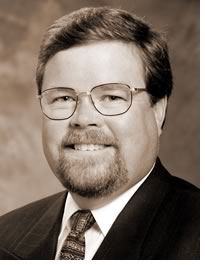

 James A. Gatsch,
FAIA
James A. Gatsch,
FAIA
James A. Gatsch, FAIA, balances the management of his 50-person architecture practice with service to the AIA and his community. He has served as 2002 national vice president, as New Jersey’s regional director, and on the national Finance Committee. He is currently the co-chair of the Livable Communities Committee. He has been a leader in protecting AIA finances and maintaining fiscal accountability at the national and local levels.
AIA National Component
• Vice President, 2002
• Member, Finance and Audit Committee (four years)
• New Jersey Regional Director
• Co-chair, Livable Communities Committee
• Member, Future Convention Task Group
• Member, 1999 and 2003, Interior Design Task Group
• Presenter, Grassroots, “Minimizing Legal Risks” and
“Practical Tips for Component Governance.”
AIA New Jersey
• President (1997)
• President-elect
• Treasurer
• Secretary
• Instituted policies designed to restore and protect chapter finances
• Winner of AIA New Jersey’s Distinguished Service and Firm
Awards
AIA Central New Jersey
• President, 1990
• President-elect
• Secretary (two years)
Education and registrations
• Virginia Tech; BArch, 1974
• Registered in N.J., N.Y., Pa., Md., Conn., and Va.
• Professional Planner, N.J.
Community service
• Chapin School, Princeton, N.J., Treasurer; Chair, Finance Committee;
Buildings and Grounds Committee; Committee on Trustees.
Mission statement
It is the treasurer’s obligation to be fiscally conservative and remain committed to the long-range financial plan adopted by the Board. It is also the treasurer’s responsibility to ensure that the AIA develops budgets that provide funding for the projects valued by the members. Additionally, the development of multi-year budgets will ensure that priorities remain consistent.
Membership: The Institute and each of its components must deliver superior services in a synergistic, noncompetitive way. When the services we provide are affordable, accessible, and valuable, our membership will grow and we will truly serve the entire profession.
Advocacy: The national and state components must continue to be strong voices in the halls of Congress and in our state legislatures on matters affecting the profession.
Livable Communities: Livable communities have a strong and independent identity; they allow life-style choices and provide a valuable legacy for their residents. The Institute must develop resources, create partnerships, and offer guidance to architects interested in enhancing the quality of life in our communities.
Copyright 2003 The American Institute of Architects.
All rights reserved. Home Page ![]()
![]()
 |
||
|
|
||